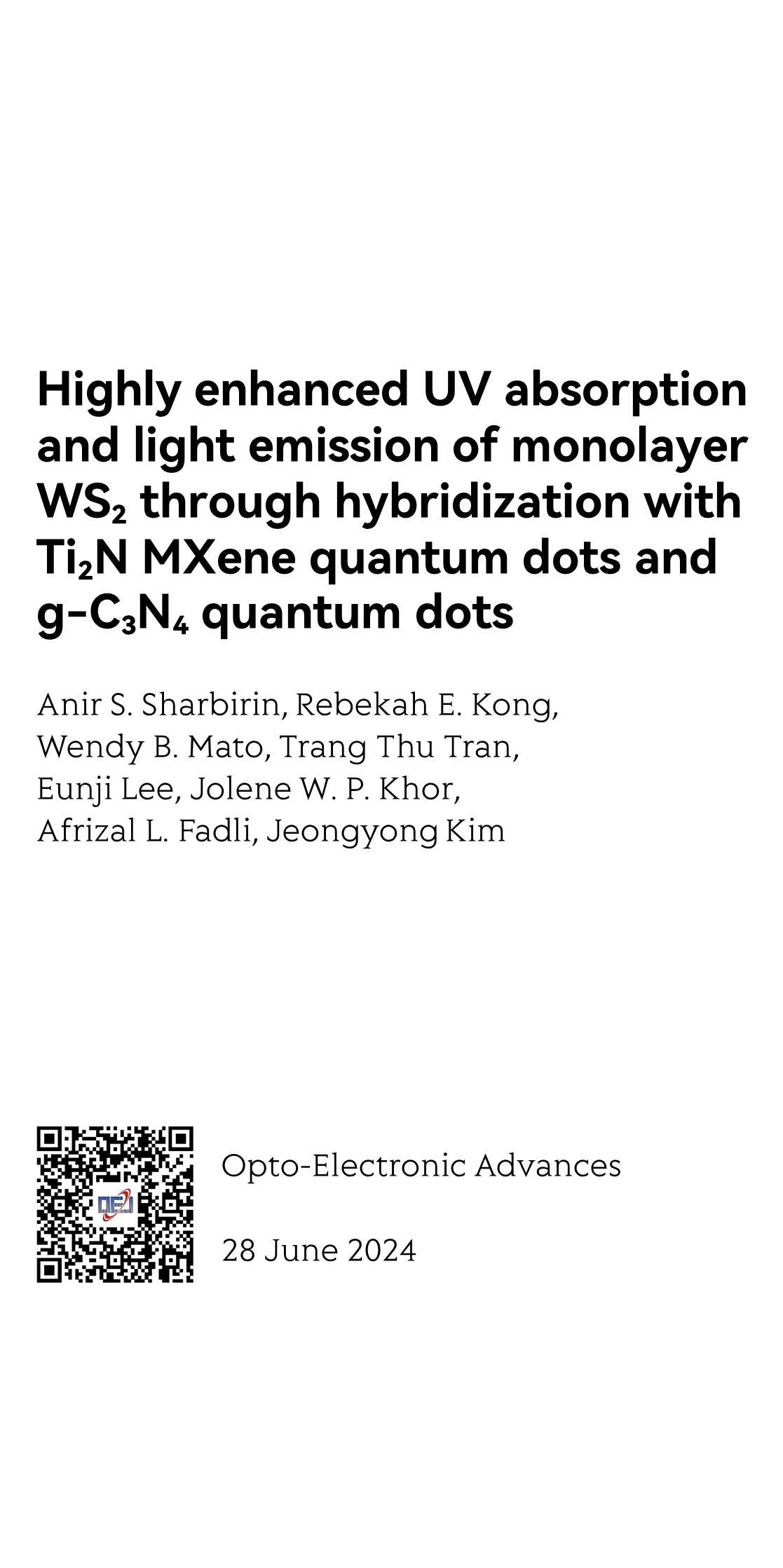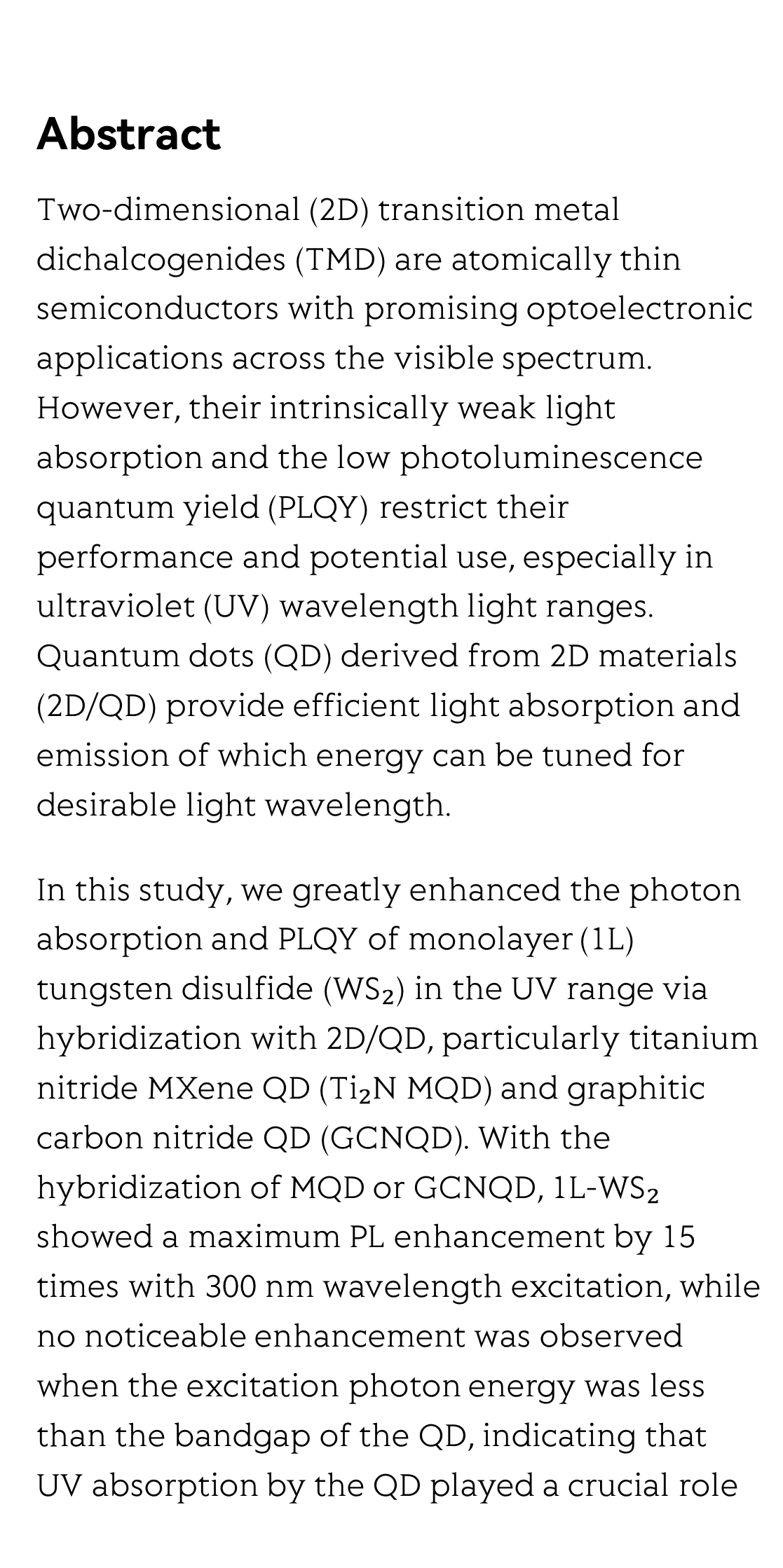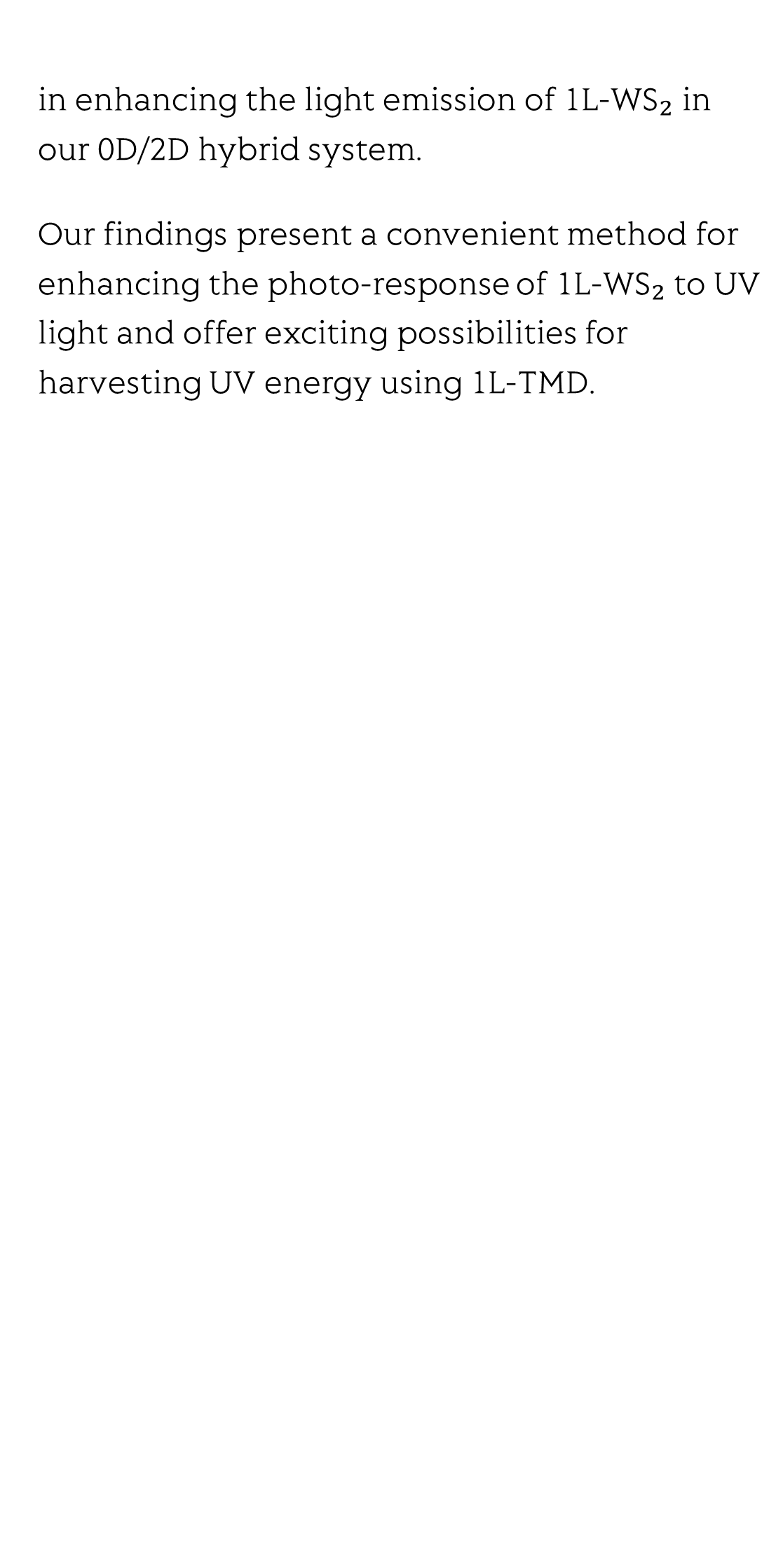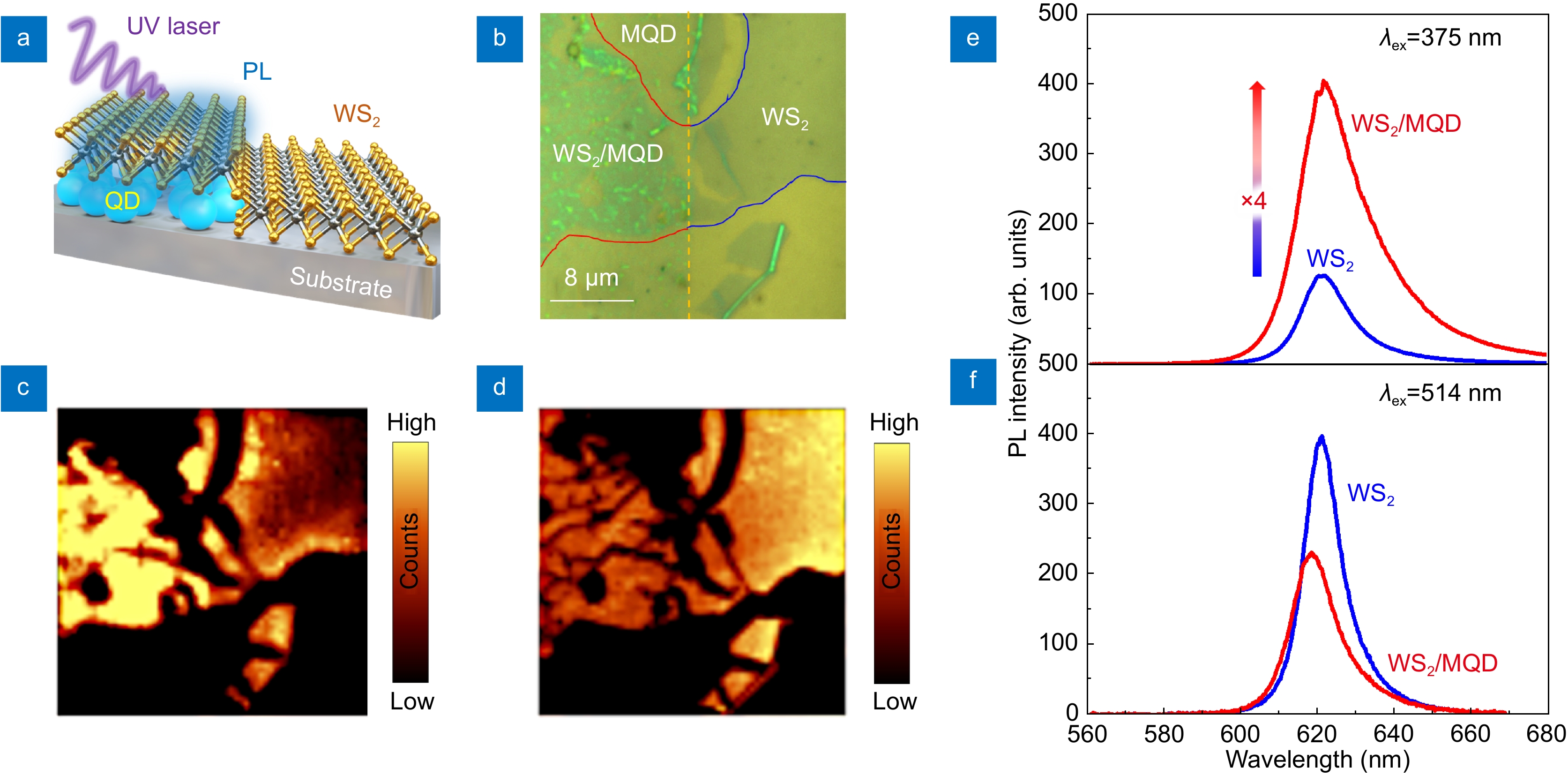(Peer-Reviewed) Highly enhanced UV absorption and light emission of monolayer WS2 through hybridization with Ti2N MXene quantum dots and g-C3N4 quantum dots
Anir S. Sharbirin, Rebekah E. Kong, Wendy B. Mato, Trang Thu Tran, Eunji Lee, Jolene W. P. Khor, Afrizal L. Fadli, Jeongyong Kim
Department of Energy Science, Sungkyunkwan University, Suwon 16419, Republic of Korea
Opto-Electronic Advances, 2024-06-28
Abstract
Two-dimensional (2D) transition metal dichalcogenides (TMD) are atomically thin semiconductors with promising optoelectronic applications across the visible spectrum. However, their intrinsically weak light absorption and the low photoluminescence quantum yield (PLQY) restrict their performance and potential use, especially in ultraviolet (UV) wavelength light ranges. Quantum dots (QD) derived from 2D materials (2D/QD) provide efficient light absorption and emission of which energy can be tuned for desirable light wavelength.
In this study, we greatly enhanced the photon absorption and PLQY of monolayer (1L) tungsten disulfide (WS₂) in the UV range via hybridization with 2D/QD, particularly titanium nitride MXene QD (Ti₂N MQD) and graphitic carbon nitride QD (GCNQD). With the hybridization of MQD or GCNQD, 1L-WS₂ showed a maximum PL enhancement by 15 times with 300 nm wavelength excitation, while no noticeable enhancement was observed when the excitation photon energy was less than the bandgap of the QD, indicating that UV absorption by the QD played a crucial role in enhancing the light emission of 1L-WS₂ in our 0D/2D hybrid system.
Our findings present a convenient method for enhancing the photo-response of 1L-WS₂ to UV light and offer exciting possibilities for harvesting UV energy using 1L-TMD.
Flicker minimization in power-saving displays enabled by measurement of difference in flexoelectric coefficients and displacement-current in positive dielectric anisotropy liquid crystals
Junho Jung, HaYoung Jung, GyuRi Choi, HanByeol Park, Sun-Mi Park, Ki-Sun Kwon, Heui-Seok Jin, Dong-Jin Lee, Hoon Jeong, JeongKi Park, Byeong Koo Kim, Seung Hee Lee, MinSu Kim
Opto-Electronic Advances
2025-09-25
Dual-frequency angular-multiplexed fringe projection profilometry with deep learning: breaking hardware limits for ultra-high-speed 3D imaging
Wenwu Chen, Yifan Liu, Shijie Feng, Wei Yin, Jiaming Qian, Yixuan Li, Hang Zhang, Maciej Trusiak, Malgorzata Kujawinska, Qian Chen, Chao Zuo
Opto-Electronic Advances
2025-09-25







